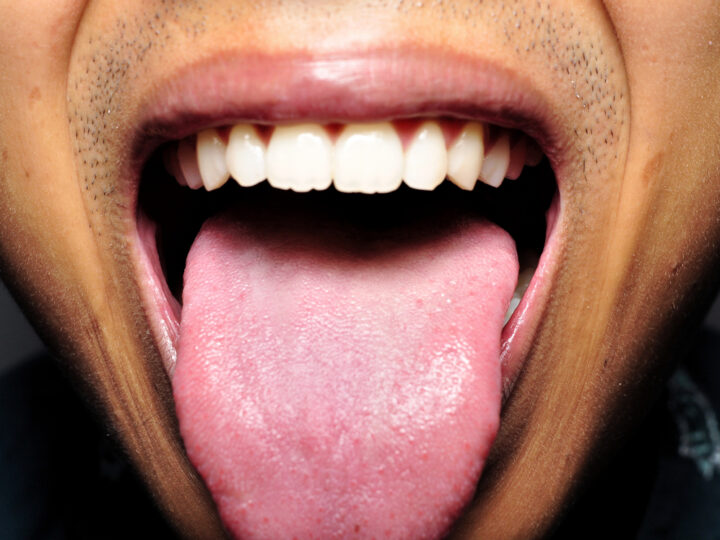UNVEILING THE WISDOM
The Art of Tongue & Pulse Diagnosis in TCM

In the ancient tapestry of Traditional Chinese Medicine (TCM), the diagnostic techniques of tongue and pulse examination stand as intricate brushstrokes, revealing the canvas of one’s internal health. Far beyond mere observation, TCM practitioners have developed the art of deciphering the nuances of the tongue and pulse over thousands of years, unlocking a wealth of information that guides personalized treatment plans. In this exploration, we delve into the profound intricacies of tongue and pulse diagnosis, unraveling the wisdom encapsulated in these ancient practices.
The Tongue as a Mirror of Health
In TCM, the tongue is considered a microcosm of the body, reflecting the state of internal organs, energy, and blood circulation. Practitioners analyze the tongue’s color, shape, coating, and moisture to gain insights into the body’s overall condition.
Color and Its Significance:
 The color of the tongue provides valuable clues about the body’s internal balance. For instance, a pale tongue may indicate blood deficiency, while a red or purple hue may suggest excess heat. A bluish tint may signal stagnation, urging the practitioner to delve deeper into the circulatory system.
The color of the tongue provides valuable clues about the body’s internal balance. For instance, a pale tongue may indicate blood deficiency, while a red or purple hue may suggest excess heat. A bluish tint may signal stagnation, urging the practitioner to delve deeper into the circulatory system.
Shape and its Correspondence:
The shape of the tongue is intricately linked to specific organs. A swollen tongue could signify dampness or spleen Qi deficiency, whereas a thin and withered tongue might indicate Yin deficiency. The tongue’s shape guides practitioners toward understanding the root causes of imbalances within the body.
Coating – A Protective Veil:
The coating on the tongue offers insights into the digestive system. A thick coating might suggest dampness or phlegm, while a lack of coating could indicate heat. The color and thickness of the coating guide practitioners in tailoring interventions to restore digestive harmony.
Moisture Levels: A Hydration Tale:
The tongue’s moisture levels convey essential information about bodily fluids. A dry tongue may indicate Yin deficiency or fluid depletion, while excessive moisture could be associated with dampness or excess Yin. Balancing these fluid levels is crucial for overall health.
Decoding the Pulse: A Rhythmic Symphony
The pulse, in TCM, is not merely a measure of heart rate but a complex dance of energies reflecting the status of the body’s organ systems. TCM practitioners meticulously assess the pulse at various positions on the radial artery, discerning its quality, depth, and rhythm.
Qualities of the Pulse:
 TCM recognizes a spectrum of pulse qualities, each offering unique insights. A floating pulse near the surface may indicate external pathogenic factors, while a deep pulse suggests internal organ conditions. A wiry or slippery pulse provides further details about the nature of the imbalance.
TCM recognizes a spectrum of pulse qualities, each offering unique insights. A floating pulse near the surface may indicate external pathogenic factors, while a deep pulse suggests internal organ conditions. A wiry or slippery pulse provides further details about the nature of the imbalance.
Pulse Positions: Mapping Internal Terrain:
The radial artery is divided into six positions, each corresponding to specific organs and meridians. By palpating these positions, practitioners map the internal terrain, identifying areas of excess or deficiency and discerning the interplay between Yin and Yang energies.
Pulse Rhythm: A Harmonic Flow:
Beyond the individual qualities, the rhythm of the pulse is crucial. A regular and harmonious pulse rhythm indicates a balanced flow of Qi, while irregularities may signal disruptions in energy circulation. Practitioners correlate these rhythms with specific imbalances for a comprehensive diagnosis.
Pulse Depth: The Journey Within:
The depth of the pulse corresponds to the depth of Qi and blood circulation. A superficial pulse may indicate conditions on the exterior, such as wind-cold invasion, while a deep pulse suggests internal organ involvement. The depth guides practitioners in identifying the root causes of disharmony.
TCM in Action: The Integrative Diagnosis
The true art of TCM lies in the integration of tongue and pulse diagnosis. By synthesizing information from both assessments, practitioners construct a holistic understanding of the patient’s internal landscape, guiding the formulation of a tailored treatment plan.
Case Example:
Consider a patient presenting with insomnia and digestive issues. A TCM practitioner may observe a pale tongue with a thin coating, indicating blood and Qi deficiency. The pulse at the spleen position may be weak, suggesting impaired digestive function. This comprehensive assessment guides the prescription of acupuncture points and herbal formulas aimed at nourishing blood, tonifying Qi, and harmonizing the digestive system.
Modern Validation: TCM and Scientific Inquiry
While the ancient wisdom of tongue and pulse diagnosis has been a cornerstone of TCM for centuries, modern research increasingly validates its efficacy. Studies have demonstrated correlations between tongue characteristics and specific health conditions, and researchers are exploring the use of pulse diagnosis as a non-invasive tool for assessing cardiovascular health.
In the realm of TCM, the art of tongue and pulse diagnosis weaves a timeless tapestry, connecting the threads of ancient wisdom with the contemporary pursuit of holistic health. The tongue and pulse, when expertly read, offer a roadmap to internal harmony, guiding practitioners toward interventions that address the root causes of imbalance. As TCM continues to bridge the gap between tradition and modernity, the nuanced insights derived from tongue and pulse diagnosis stand as a testament to the enduring brilliance of this ancient healing art.
Newer
Bridging Ancient Wisdom and Modern Science: TCM's Validation through Recent Research
Older
Holistic Healing: TCM's Advanced Approach to Mental Well-being
Comments (0)
Leave a reply
You must be logged in to post a comment.




